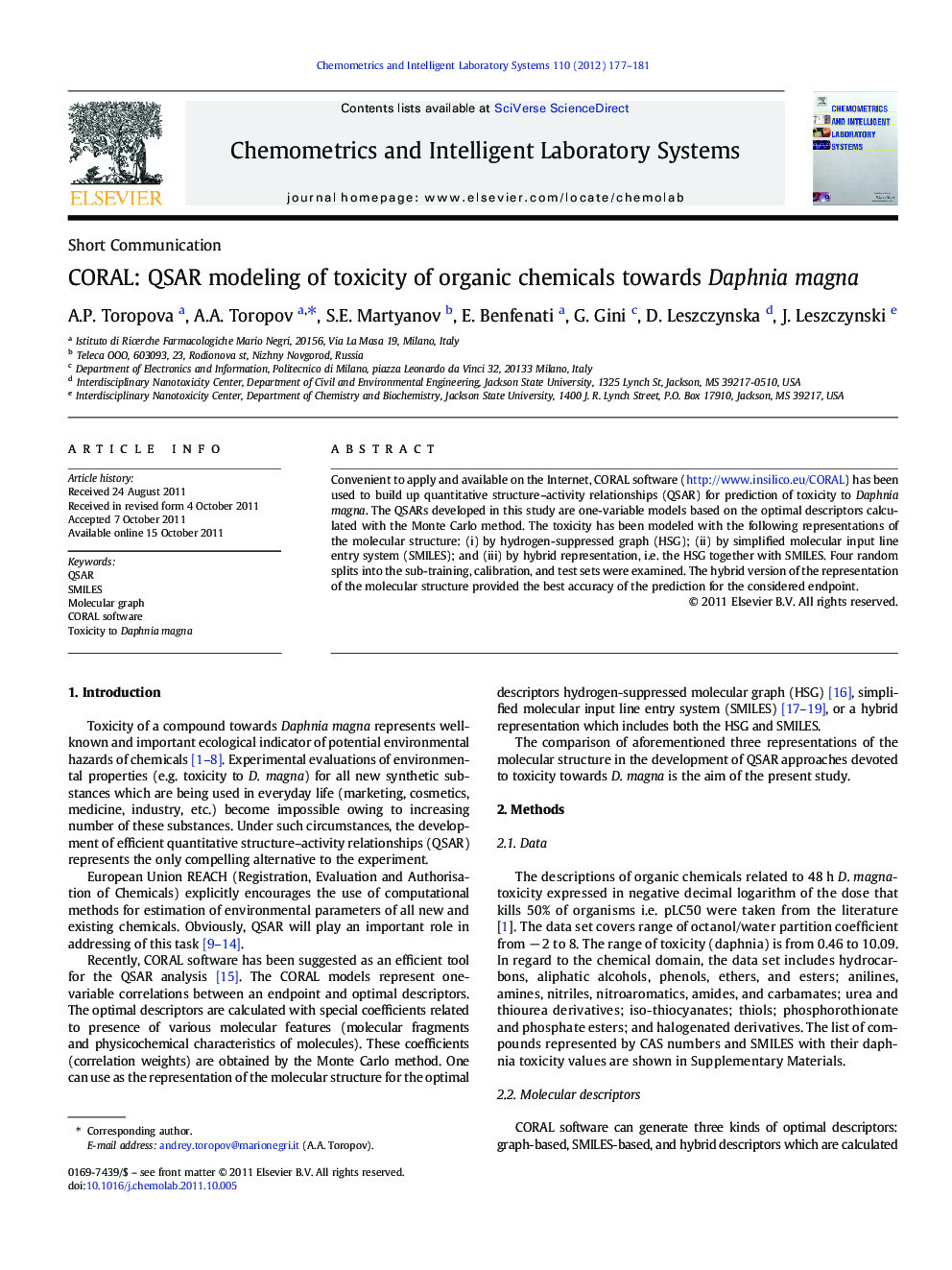| Article ID | Journal | Published Year | Pages | File Type |
|---|---|---|---|---|
| 1180952 | Chemometrics and Intelligent Laboratory Systems | 2012 | 5 Pages |
Convenient to apply and available on the Internet, CORAL software (http://www.insilico.eu/CORAL) has been used to build up quantitative structure–activity relationships (QSAR) for prediction of toxicity to Daphnia magna. The QSARs developed in this study are one-variable models based on the optimal descriptors calculated with the Monte Carlo method. The toxicity has been modeled with the following representations of the molecular structure: (i) by hydrogen-suppressed graph (HSG); (ii) by simplified molecular input line entry system (SMILES); and (iii) by hybrid representation, i.e. the HSG together with SMILES. Four random splits into the sub-training, calibration, and test sets were examined. The hybrid version of the representation of the molecular structure provided the best accuracy of the prediction for the considered endpoint.
► Correlations between Daphnia magna toxicity and optimal descriptors were examined. ► Three types of the optimal descriptors were considered. ► They are: descriptors which are calculated with solely graphs. ► Descriptors which are calculated with solely SMILES ► Hybrid descriptors which are calculated with both SMILES and graphs ► The hybrid descriptors are best predictors for considered endpoint.
